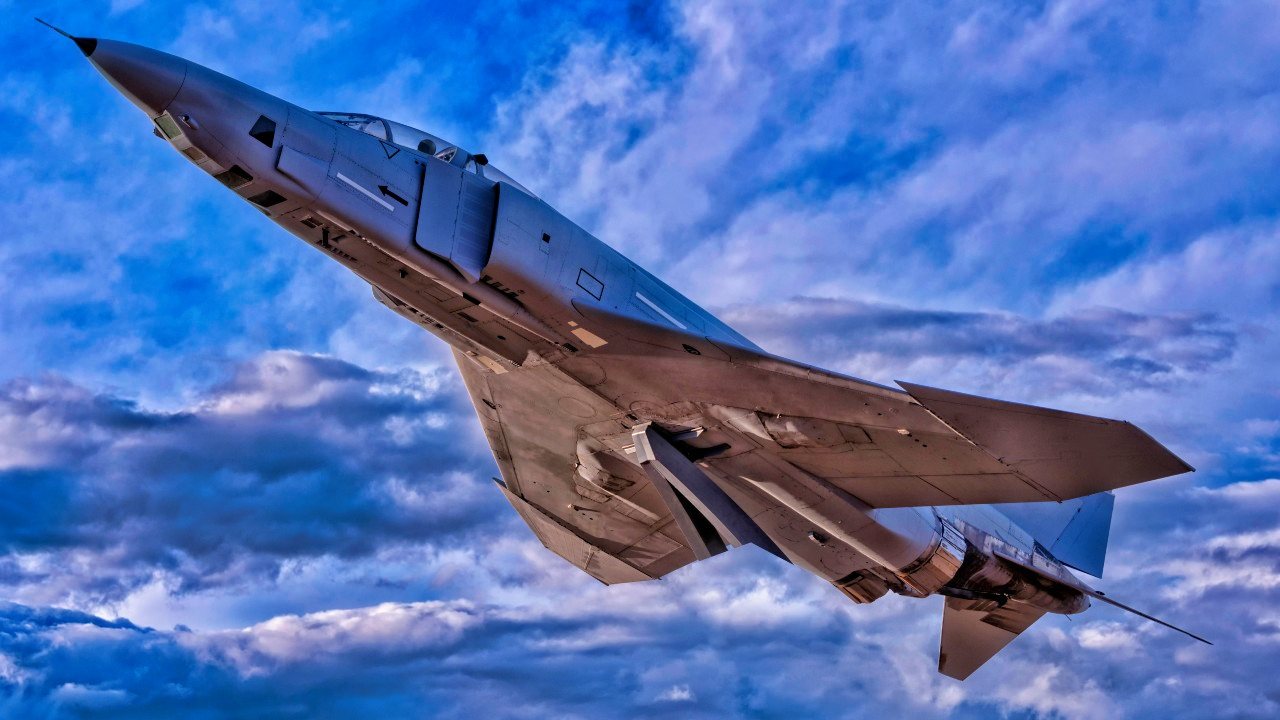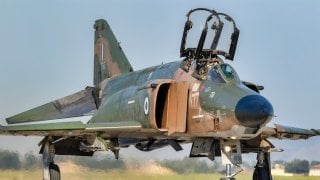The F-4 Phantom Fighter (Made in USA) Flies for Iran
The Iranian air force has a total of sixty-three F-4 Phantoms, specifically the F-4D, F-4E, and RF-4E variants. The F-4E was indeed the last variant of the venerable Phantom to be built, produced between 1965 and 1973.
The McDonnell Douglas F-4 Phantom is arguably the single best and most famous third-generation jet fighter. It served the United States Air Force, Navy, and Marine Corps faithfully from the Vietnam War in the mid-1960s and early 1970s to the 1991 Persian Gulf War AKA Operation Desert Storm.

(NOTE: McDonnell Douglas merged with Boeing in 1997; however, unlike, say, the merger of Lockheed with Martin Marietta to form Lockheed Martin in 1995, or the 1994 merger of Northrop and Grumman to form Northrop Grumman, only one of the predecessor companies’ name, i.e. Boeing’s was retained.)
The venerable fighter bomber also acquitted herself in aerial combat at the hands of the Israeli Air Force (IAF) during multiple Arab-Israeli conflicts including the War of Attrition (July 1967-August 7, 1970) and the Yom Kippur War of 1973, before being finally retired by the IAF.
So, imagine the tremendous irony that one of the last three remaining users of the Phantom (besides NATO members Greece and Turkey) is Iran, one of the worst enemies of the United States and Israel, more specifically, the Islamic Republic of Iran Air Force (IRIAF), which dubs America and Israel as “The Great Satan” and “Little Satan,” respectively.
F-4E history and specifications
According to the World Directory of Modern Military Aircraft, the IRIAF has a total of sixty-three Phantoms, specifically the F-4D, F-4E, and RF-4E variants. The F-4E was indeed the last variant of the venerable Phantom to be built, produced between 1965 and 1973. The planes were sold to Iran when it was still under the rule of Mohammed Reza Shah, who was a staunch ally of both the United States and Israel.

The F-4E has the following specifications and vital stats:
Fuselage Length: 63 ft 0 in (19.2 m)
Wingspan: 38 ft 5 in (11.7 m)
Height: 16 ft 5 in (5 m)
Max Airspeed: Mach 2.23 (1,280 kn; 1,470 mph; 2,370 km/h)
Service Ceiling: 60,000 ft (18,000 m)
Combat Range: 370 nmi (420 mi, 680 km)
The Why and the Wherefore
Okay then, so why exactly does the IRIAF still have the battle-proven but now oh-so-antiquated Phantom in its fleet? (Ditto for the fourth-generation F-14 Tomcat?) Well, a big part of it is the fact that Iran has been an international pariah even since the country became an extremist Islamic fundamentalist regime ruled by the iron first of the mullahs and ayatollahs even since the Iranian Revolution of 1979 overthrew the Shah and installed the diabolical Ayatollah Ruhollah Khomeini (17 May 1900 – 3 June 1989) as Supreme Leader.
Since then, as a state sponsor of terrorism, the Islamic Republic of Iran has been hobbled by sanctions that make both new weapons system acquisitions and spare parts for existing systems alike an extremely difficult and dicey proposition.
In the meantime, the IRIAF continues to make judicious use of the F-4E in combat; BBC News reports the Iranians used the planes in combat as recently as 2014, in strikes against the Islamic State (ISIS)
The Way Forward for F-4 in Iran?
As for the prospect of Iran finding a replacement for both its F-4 and F-14 fleets, well…the Russians are trying to help them out of that jam, in accordance with Vladimir Putin’s Unholy Alliance/New Axis of Evil with Iran, China, and North Korea, in the form of sales of the Sukhoi Su-35 “Super Flanker.” According to Aero-News Journal, a deal was inked between Tehran and Moscow back in November 2023; this deal would have also included Mi-28 attack helicopters and potentially the S-400 air defense system).

However, that deal has hit a snag. Back on April 21, 2024, Radio Free Europe/Radio Liberty announced that the Iranian government was denying the previous report:
“Reports in the Iranian media that the country is to receive the latest generation of aircraft in the next few days are incorrect, according to the Fararu news website. The media had referred to a report by the SNN news agency, which is close to Iran's Islamic Revolutionary Guard Corps (IRGC). The agency itself denied the report on its Telegram page after consulting with the Defense Ministry, which last year announced that Iran had acquired Mi-28H combat helicopters and Yak-130s from Russia in addition to the SU-35 fighter jets.”
To make matters more confusing, the Kuwaiti newspaper Al-Jarida had reported the previous week that Iran had indeed already received some of the Su-35s roughly a year prior but was unable to operate them due to a dearth of spare parts. Evidently, the Iranian Defense Ministry is a prime example of the proverbial left hand not knowing what the right hand is doing.
About the Author:
Christian D. Orr is a Senior Defense Editor for National Security Journal (NSJ). He is a former Air Force Security Forces officer, Federal law enforcement officer, and private military contractor (with assignments worked in Iraq, the United Arab Emirates, Kosovo, Japan, Germany, and the Pentagon). Chris holds a B.A. in International Relations from the University of Southern California (USC) and an M.A. in Intelligence Studies (concentration in Terrorism Studies) from American Military University (AMU). He has also been published in The Daily Torch , The Journal of Intelligence and Cyber Security, and Simple Flying. Last but not least, he is a Companion of the Order of the Naval Order of the United States (NOUS).
Image Credit: Creative Commons.


